팁 테크닉
Crema(크레마) by James Hoffmann
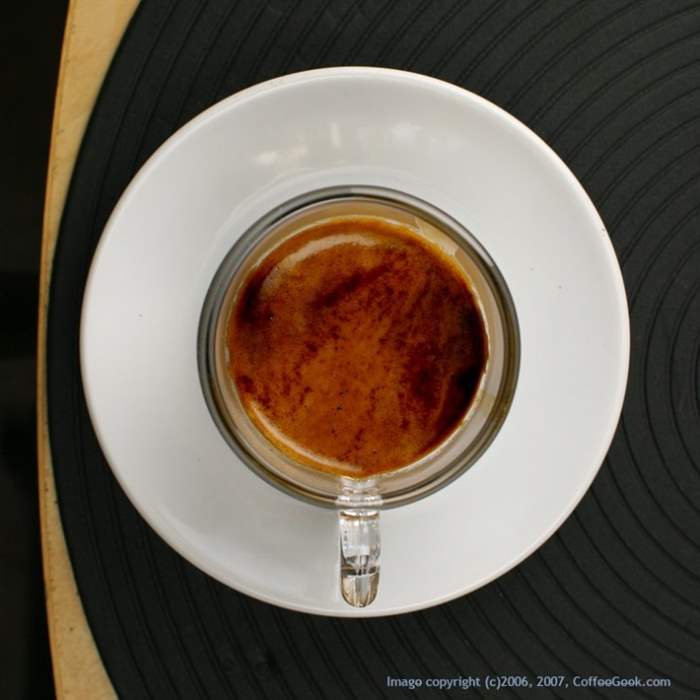
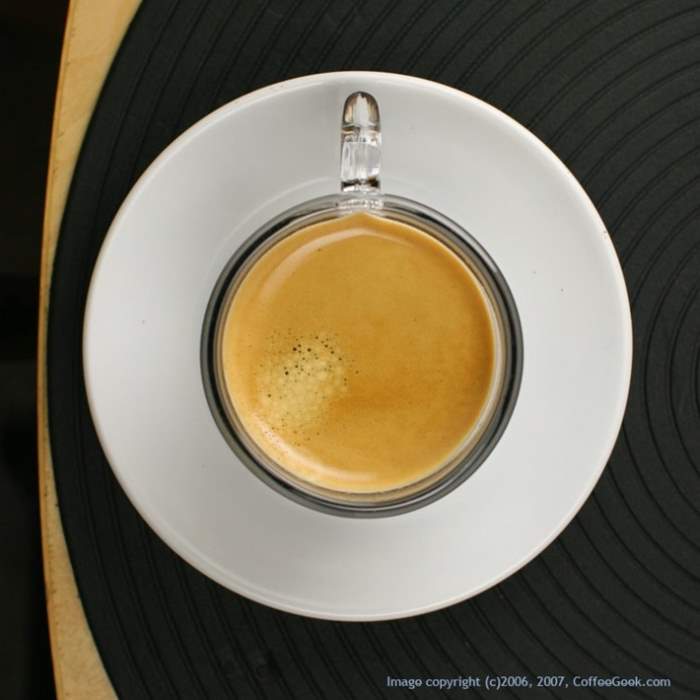
http://coffeegeek.com/opinions/barista/10-14-2006 by James Hoffmann
크레마에 관한 연구는 이미 널리 알려진, illy의 논문 Neglected Food Bubbles : The Espresso Coffee Foam 를 참고해도 좋을 것 같습니다. 나름 재미도 있어서 열심히 읽어치운 논문이기도 하지만, 그것보다 훨씬 쉽고도 잘 설명된 자료가 있어서 첨부합니다. 다름이 아니고, 2006년 Coffee Geek에 소개되었던 제임스 호프만의 Crema 라는 기고글입니다.
사실 내용은 일리박사의 논문과 그렇게 다르지 않습니다.
What is crema and why does it appear?
Amidst the complex chemistry of coffee roasting a lot of carbon dioxide, or CO2, is generated. Much is lost from the porous bean as it cools and rests, but a considerable quantity is retained with the cells. Grinding exposes a good amount of the remaining CO2, so as short a wait before brewing as possible is necessary to take advantage of this gas and its many beneficial properties.
커피 로스팅의 복잡한 화학작용 속에서 다량의 이산화탄소가 생성된다. 원두가 식어가고 숙성되면서부터 많은 양을 잃어버리기도 하지만, 상당한 양은 세포내에 남게 된다. 그라인딩을 통해 충분한 양의 이산화탄소를 남기기 위해 추출전 가능한한 짧은 시간을 지체하는 것이 이러한 가스를 통한 이득과 유익한 효과를 위해 필요하다.
Hot water hits the ground coffee and interesting things
start to happen.
뜨거운 물이 그라인딩 된 커피를 만날때 재미있는 일들이 일어난다.
To many who talk and write about espresso, the pump pressure of 9 bars is most relevant to emulsifying the otherwise insoluble oils in the coffee.
에스프레소에 대한 많은 이야기와 글을 쓴 사람들에 따르면 9BAR의 펌프의 압력이 녹지 않는 커피오일을 에멀전화 시키는데 가장 적합하다고 한다.
It has another use as well, because it allows water to become supersaturated with the CO2, dissolving far more than it could if the water is at normal atmospheric pressure. This is why the thousands of tiny bubbles appear as soon as the liquid escapes the pressurised basket. In the cup, these thousands of tiny bubbles settle out, much like a pint of Guinness when it is poured (where the same thing is happening, just for slightly different reasons). Hence the term the “Guinness effect”
또다른 기능으로는 이 고압의 압력은 물이 대기압일때보다 더 많은 이산화탄소로 과포화되게끔 한다는 것이다. 이것이 바로 가압된 바스켓 하단으로 부터 에스프레소가 추출될 때 수천개의 공기방울이 보여지는 이유다. 컵에서는 이 수천개의 이산화탄소 방울 빠져나오게 되는데, 이것은 마치 기네스(맥주)가 따라질 때 발생하는 것과 유사하다(단 유사한 현상이지만, 조금은 다른 차이가 있다) 이런 현상을 기네스 효과라고 한다.
This alone is not enough to explain the crema. After
all - when I release pressure by opening a bottle of cola I briefly see bubbles
rise and form a foam, but nothing that would pass the classic Italian test of
supporting a spoonful of sugar. To explain this properly we have to delve
briefly into a little food science.
이것만으로는 크레마를 충분히 설명할 수 없다. 콜라병을 열어 압력을 릴리즈해주면 즉시 방울들이 생겨나고 곧
거품으로 변하는 것을 볼수 있지만 전통 이탈리아 방식의 테스트(크레마가 설탕을 지지하는지를 보는)를 통과할 수 있는 것은 아니다. 이것을
적합하게 설명하기 위해서는 약간의 식품 과학을 알아볼 필요가 있다.
For a foam to happen we need some
bubbles and also some sort of compound or molecule that likes to wrap itself
around the bubble, thus making the bubble's structure stronger and more
resilient.
폼을 얻기 위해서는 공기방울과 공기방울을 둘러 쌀수 있는 얼마간의 혼합물질 또는 분자들이 필요하고, 이것들은 공기방울 구조를 강하게 하고 좀더 탄력있게 한다.
This chemical doing the coating is referred to as a surface active agent, or surfactant. I first came across this concept reading the Guide to Milk Frothing on CoffeeGeek, but, unlike milk where this happens via proteins, in coffee this is done by a type of compound called a melanoidin. This is a very general term for a group of compounds creating when roasting things, and scientists don’t know as much as they’d like to about them.
이 코팅의 화학적 역할은 표면 활성제 혹은 계면활성제로써 일컬어진다. 이러한 컨셉을 CoffeeGeek의
Guide to Milk Frothing 을 통해 가져왔다. 하지만, 우유의 경우는 이러한 현상이 단백질을 통해
이루어진다는 것이 다르며 커피의 경우는 멜라노이딘이라고 부르는 혼합물(복합체)에 의해 이루어진다. 이것은 로스팅으로 인해 생기는 물질들을 모두
아울러 일컫는 일반적인 용어이고, 아직 과학자들에 의해 명확히 밝혀지지는 않았다.
The reason proteins and melanoidins coat air bubbles is that parts of them are repelled by water - they are said to be hydrophobic. So rather than face water they turn and face any air, which isn't polar, causing the whole compound to adsorb onto the bubble - and we have foam!
공기방울을 둘러싼 단백질과 멜라노이딘 코팅은 부분적으로 물에 대해 반발적이고 - 흔히 소수성 물질이라고
일컬어진다. 무극성이기 때문에 물과 닿기보다는 공기쪽가 있는 표면으로 이동한다. 이런 모든 혼합물들은 방울을 흡착하게 된다. - 그리고 우리는
폼을 얻는다.
There is something else that is non polar and that is fat/oil. I
say both because fat is just an oil in a solid state, and both solids and
liquids are present. The presence of fat often destroys foam - think getting a
little egg yolk in the bowl when trying to whip the whites: this fat from the
yolk is the main reason so many souffles fail.
무극성과 지방, 오일에 대한 내용이 더 있다. 지방은 고체상태의 오일이며, 고체와 액체들로
존재한다. 지방은 흔히 폼을 파괴한다. 달걀흰자를 볼에 넣고 휘핑시킬때 아주 적은 양의 노른자가 들어가게 되는 경우를
생각해보자. 이 경우 노른자의 지방이 바로 수플레를 망치게 되는 가장 주된 이유가 된다.
So are the oils in coffee the reason that crema is
fleeting and last only a few minutes? The simple answer is yes and no. There
exists a bigger problem, and that problem is drainage. The surfactant is
dissolved in the water and as gravity starts to drain the coffee from amongst
the foam this can drag the coating from the bubbles and leave them weak and
inelastic. Very quickly they burst and are gone.
그렇다면 커피에 있는 오일이 크레마가 쉽게 사라지게 만드는 이유일까? 가장 심플한 대답은 그렇다. 그리고 아니다. 더 큰 문제가 있는데, 그 문제는 바로 배수다. 계면 활성제는 물속에 녹아있으며, 중력이 거품을 둘러싼 커피를 유출시키며 이로인해 방울의 코팅을 벗겨내며 약하고 탄력을 떨어지게 만든다. 매우 빨리 사라진다.
How quickly this foam bursts is therefore linked to the
speed of the drainage. The crema on top of a properly pulled shot lasts much
longer than a fast shot because the liquid that makes up the entire beverage is
much thicker, something confirmed by the feel in the mouth when tasting these
shots.
폼이 붕괴되는 속도는 배수의 속도와 관련이 있다. 적절히 추출된 샷의 상부의 크레마는 빨리 추출된 샷의 크레마보다 오래 지속된다. 샷들을 맛볼 때 입안에서의 느낌으로 결정되는 이유로 이렇게 만들어진 음료는 훨씬 thicker 해진다.
The colour of crema: what does it tell us?
I mentioned the colour of crema being a reddish brown but what does it mean if the crema is more pale, or perhaps a really dark, almost burn-coloured brown? The answer partially comes from the beverage. Because crema is bubbles of CO2 covered in brewed coffee, then the darker the foam looks then the darker the brewed coffee liquid must be, one must assume.
나는 크레마의 색상은 붉은 갈색이어야 한다고 언급했었지만, 연한 색상, 혹은 정말 짙고 타버린듯한 갈색은 무슨 의미일까? 대답은 음료에 있다. 크레마는 커피를 덮고 있는 이산화탄소 방울이기 때문에, 크레마가 어두워지면, 그 다음 커피도 더 어두워진다고 가정한다.
But seeing differences in the colour of the coffee
itself is extremely difficult unless you dilute two different shots down or look
at them under a microscope.
두 개의 서로 다른 샷을 희석하거나 현미경으로 관찰하지 않는 한 그 자체로 색상의 차이를 알아채기는 매우 어렵다.
Another factor comes into play as well : the way that foams refract light means that the colour of the liquid foamed up will appear much lighter than the full liquid state.
함께 다루어지는 사실은 : 폼이 빛을 굴절시키므로, 거품화된 액체의 색상은 순수 액체 상태보다 훨씬 밝게 나타난다.
The smaller the bubbles are, the more exaggerated the effect can be, so the foam of even a very dark liquid that doesn't have the same thickness as espresso/ will look surprisingly light (explaining why a dark pint of Guinness has a bright white, foamy head as the bubbles are extremely small and tightly packed)
보다 작은 방울들은 더 많은 과장된 영향을 보여줄수 있으므로, 에스프레소와 동일한 두께를 가지지
않는 아주 어두운 액체의 거품은 굉장히 밝은 색을 보여줄 것이다.(기네스 흑맥주가 극히 작고 빽빽한 방울로 이루어진 희고 밝은 거품층을 가지고
있는 이유 역시 설명한다)
In espresso, a fifteen second shot typically has a much
paler crema because it is a much weaker brew. The water has had less time to
capture the coffee solubles, and the resulting brew doesn't have the same
viscosity that a 25 second well prepared shot may have. For a similar reason a
shot with lower temperature brew water will have pale crema because there wasn't
enough energy to dissolve everything desired from the coffee. It then makes
sense that overextracted shots look darker than normal, resulting in what looks
often like a burnt outer ring on the crema.
일반적으로 15초의 에스프레소 샷은 약한 추출이기에 더 흐릿한 크레마를 가진다. 물이 커피 가용성분을 충분히 가지지 못하고, 추출의 결과는 같은 25초의 잘 추출된 샷이 가질 점성을 가지지 못할 것이다. 비슷한 이유로 낮은 온도의 추출물온도일 경우도 옅은 크레마를 보여주며 그 이유는 커피로 부터 원하는 만큼 충분한 양을 용해시킬 에너지가 부족하기 때문이다. 또한 그것은 과다추출 된 샷이 노말 샷보다 어두우며, 크레마의 가장자리가 탄 듯한 엣지를 보여주는 이유이다.
Can I ever have too much? The arabica vs. Robusta debate.
For a long time one of the counter-arguments to those who were against robusta in espresso was that some robusta gave the shot better crema. 오랫동안 에스프레소에 로부스타를 쓰는 것을 반대하는 사람들을 반박하는 논리중 하나는 로부스타가 좀더 좋은 크레마를 준다는 것이다.
This is indeed true and the most plausible explanation is down to the oils in coffee. On average robusta varietals contain about half of the flavour and aromatic oils that arabica coffee beans typically have. This means there is less oil extracted into the brew - so less of them effectively attacking the foam and causing it to disappear. Whilst I am not going to get embroiled in the debate of whether it belongs in espresso, in effect adding robusta lowers the overall quantity of oil available to extract from your puck of coffee, meaning you have a higher probability of a stronger crema.
이것은 실제로 사실이며, 가장 그럴듯한 설명은 커피속의 오일이다. 로부스타 변종의 오일 평균 함량은 일반
아라비카이 함유하고 있는 향미 오일들의 절반 정도다. 이 의미는 크레마를 훼손하고 사라지게 만드는 오일이 실제 추출시 더 적게
추출된다는 것이다. 아마도 많은 논쟁이 오가겠지만, 실제 로부스타는 실제 추출시 적은 오일로 인해 높은 지속성을 가지는 크레마를 만들어준다는
것이다.
Food technologists will also tell you that this lower amount of oil
/ means that whilst the shot may initially seem to have more body, the lack of
oils means that sensation does not last like it does with a pure arabica shot,
full of body.
식품기술자들은 로부스타의 적은 오일함량으로 인해 느껴지는 감각이 실제 순수 아라비카종과 같지 않고, 처음에는 바디가 더 많은 것처럼 보이게 만들거라고 말할것이다.
What is very much up for debate is the use of smaller quantities such as 5%-10% where you wouldn’t expect a dramatic loss of quality, but would expect an increase in the stability of the crema.
단지 5~10%정도의 작은 양으로 드라마틱한 품질 감소를 예측할수는 없을 것이고 많은 논의도 별 소용이 없을 것이지만, 아마도 크레마의 지속성은 예상할 수 있을 것이다.
I am happy to accept arguments that this alone cannot
explain robusta’s extra crema, and there are some articles that point towards
some different types of sugar in robusta that may have an effect. I hope that
as more information comes to light this article can be updated and kept
current.
나는 즐겁게 로부스타가 가지는 여분의 크레마를 단지 이것만으로는 설명할 수 없다는 이 논의를 수용했다. 그리고 아마도 영향을 미칠수 있는 로부스타의 "좀더 다른 특성을 가지는 당분"에 대한 논의가 있다.
This by no means answers every question about crema. I
regularly encounter unusual espressos with unique crema producing qualities,
based on their different chemical composition. One that comes to mind is a
biodynamic Brazil from South Minas. The farm of Camocim dry pulps some of its
Yellow Bourbon (meaning more of the sticky fruit meat is left behind when it
goes for drying). In the cup it is monstrously sweet and when brewed as an
espresso, even 9 days from roast, it produced huge amounts of very fluffy, oddly
stiff crema.
이것은 크레마에 대한 의문들에 대한 답은 아니다. 나는 각각의 다른 화학적 조성에 따라 독특한 크레마를 가지는 에스프레소들을 종종 본다. 생각나는 것 중 하나는 South Minas 로부터온 생체역학적인 브라질 품종이었다. 옐로우 버번 품종을 건식 처리하는 농장이었다.(과육을 그대로 남긴채 건조하는) 실제 에스프레소로 추출한 컵에서는 로스팅 된지 무려 9일이나 지났음에도, 굉장히 sweet 한 맛을 나타냈다. 그리고 굉장히 솜털같고, 묘하게 뻣뻣한 크레마를 만들었다.
Even as it drained and dried out, shots brewed with
this Camocim, South Minas Brasil coffee showed crema that stayed strong, with a
texture close to that of dry milk foam. This coffee is not alone in producing
“unusual” crema. Often coffee processed very differently - such as aged coffees
like Monsooned Malabar - show themselves in a crema with a different texture, be
it in the dryness or perhaps brittleness of the foam.
심지어 모두 배출되고, 건조되었음에도, 이 Camocim, South Minas Brasil coffee
로 추출된 샷의 크레마는 마치 마른 우유거품처럼 여전히 강력하게 남아있었다. 이 커피는 독특한 크레마안에 함께 있었다. 흔히 독특하게 처리되는
커피 - 몬순 말라바 같이 오래도록 숙성되는 품종 - 들은 건조되거나 혹은 아마도 깨지기 쉬운 텍스쳐를 가진 크레마를 보여준다.
What this all boils down to is that even within the arabica genus of
coffee beans, many different varietals can have different effects on crema, and
most of it is based on how the coffees store CO2, what kind of range of oils and
fats they contain, and how these are extracted into the cup. The discussion
about arabica vs. robusta when it comes to crema is very limiting - it can even
extend to micro-genus species within the arabica family.
아라비카의 품종들도 변종여부에 따라 크레마에서 다양한 차이가 나타나고 크레마는 대부분 커피가 가지고 있는 이산화탄소에 기인하며, 얼마나 많은 오일과 지방을 함유하고 있는지와, 또 이들이 어떻게 컵으로 추출이 되는지에 대한 모든 것이 결국 하나로 귀결된다. 아라비카와 로부스타의 크레마에 대한 대결은 - 아주 다양하게 분화될수 있기에 - 아라비카 군의 종 특성으로 인해 제한적이다,
Tiger flecking / mottling
We are often told our shots should have a darkish red mottling over the surface, and Illy have made it part of their espresso definition.
우린 흔히 샷의 표면 위에는 검붉은 반점이 있어야한다고 말하고, 일리도 그것을 에스프레소의 한 부분으로
정의했다.
The flecks are tiny fine particles of ground coffee, pushed out of
the puck during the first part of the extraction. Often I see them around the
rim of the shot early on and it seems to spread across the surface as the shot
progresses. This would imply they are not only a sign of a good shot, but also
of a good grinder that is able to produce the necessary range of particle size
for good espresso.
점들은 그라인딩된 커피의 아주 미세한 조각이고, 샷의 추출 초반에 퍽으로부터 추출되어 나온다. 흔히 나는 샷 초반에 가장자리에서 그것들을 볼수가 있었고, 또 샷 추출이 진행됨에 따라 교차되며 퍼지는 것을 볼수 있었다. 이것은 단지 좋은 샷의 척도가 아니라, 좋은 에스프레소의 추출을 위해 필요한 범위안에서 적절한 그라인딩 포인트를 보이는 좋은 그라인더라는 것 역시 의미한다.
If a grinder produces too uniform a grind then,
contrary to expectation, the pieces don’t fit together as well. Imagine filling
a swimming pool with beachballs, and the filling it with a mixture of beach
balls, soccer balls and tennis balls. Or take a cue from Mark Prince's initial
article on tamping, and visualise the coffee grounds as pieces
of a puzzle - all different shapes and sizes, and many interlocking to form a
nice tight container, yet still some pieces overlap and leave gaps and spaces
for water to properly flow through. In the cup, tiger mottling shows the results
of this grind particle size range.
만약 그라인더가 아주 일정한 분쇄도를 가지고 있다면, 불리한 예상이지만, 조각들은 서로 꽉 맞지 않을
것이다. 비치볼이 가득찬 수영장에 축구공, 테니스 공 등이 같이 섞어있다. Mark Prince의 초기 article on tamping 을 읽어보면 커피 가루가 퍼즐 조각처엄 보일것이다. 서로 다른 크기의 조각들이
서로 맞물려 최적의 결속을 보인다. 조각들이 서로 겹쳐지고, 빈 공간을 메우며 물이 최적의 흐름을 보일수 있도록 만든다. 컵의 타이거
스킨은 분쇄된 커피가루들의 범위에 대한 결과를 보여준다.
What crema can and cannot tell us :
Crema can tell
us:
- If the coffee is fresh
Whilst we can look for an abundance of foam to confirm freshness this can be confused by high robusta content. Instead look at the way the foam settles out. With fresh coffee the entire shot seems to be crema as it brews. Only after the pour stops does it settle out into two clearly defined phases. With older coffee you can often see a thinner, separate head of foam settling out as the shot pours. The resulting coffee is often thin and watery meaning the little crema we have disappears quickly.
많은 양의 거품에 관한 신선도는 많은 로부스타의 커품과 혼란되어 여겨질수 있다. 반면에 폼이 밖으로 자리잡는 방법을 보자. 신선한 커피는 추출하는 동안 샷의 전체가 크레마처럼 보인다. 추출이 끝나면 명확히 두가지의 상태로 나뉘게 된다. 오래된 커피는 흔히 샷 추출시 보다 얇고 분리된 거품층을 볼수 있다. 이 경우 커피의 결과는 흔히 얇고 묽으며 금방 사라지는 적은 량의 크레마를 의미한다.
- How fully we have extracted the
coffee
The darker the crema the more solubles in the cup.
어두운 크레마는 컵에 더 많은 가용성분을 의미한다.
- The evenness of the extraction
If the crema is stable then the liquid we brewed was nice and thick, implying less channeling, pitting, or other shot defects.
만약 크레마가 안정되었다면 추출된 커피는 멋지고 두터울 것이고, 더 적은 채널링, 패임이나, 다른 결점을 가지고 있을 것이다.
What crema does not tell us :
- If the coffee will taste good.
Cheap, poorly roasted coffee will still produce good crema when fresh, and a machine has to be massively filthy before it becomes evident in the crema.
싸고, 품질이 떨어지는 원두라도 신선하다면 좋은 크레마를 보여주고, 머신은 크레마에 흔적이 나타나기 전에 많이 더러워질것이다.
- That the coffee oils are properly emulsified(커피오일이
적절하게 유화되었을 것이다)
For a long time people - myself included - thought the crema gave us information about how well we've extracted the oils. But theory tells us the more oil we have the less foam we should end up with. Should you ever brew espresso with a pump running at 5 or 6 bars you will find it still produces plenty of crema but a cup that tastes pretty poor due to the missing oil and oil soluble flavours.
많은 시간동안 사람들은 크레마가 우리에게 얼마나 커피오일이 잘 추출되었는지를 보여준다고 여겨왔다. 하지만 이론들은 더 많은 오일들은 오히려 더 적은 거품을 형성한다고 알려준다. 만약 펌프압력이 5, 6 bar 에서 추출이 된다면 다량의 크레마를 얻을 수 있을 것이다. 하지만 맛은 향미 오일의 추출이 제대로 이루어지지 않았기에 엉망일 것이다.
Crema, uncomplicated
Espresso and crema are often built up to be more complicated than they are (and perhaps an entire article on this matter of crema doesn't help that perception!). But crema is something actually quite simple in the overall scheme of espresso preparation. David Schomer the noted expert on espresso, latte art, and roasting techniques from Seattle, once described crema as a polyphasic colloidal foam. I would disagree, and I will explain why:
에스프레소와 크레마는 사실 훨씬 더 복잡하게 생성된다. 하지만 크레마는 에스프레소 준비의 체계에서 꽤나 단순하다. 데이비드 쇼머(시애틀의 에스프레소 , 라뗴아트, 로스팅 테크닉 전문가)는 크레마를 콜로이드 다면체라고 언급하지만 나는 동의하지 않고 이유는 다음과 같다.
Polyphasic means that crema would have multiple phases
and the terminology is correct when talking about the whole espresso. It has
three phases: a water phase, an oil phase and a foam phase. Colloidal means that
there is some sort of stable emulsion, which again is true of espresso: the oil
in water emulsion is very stable, and unlike home made salad dressing will not
separate out.
다상구조는 크레마에도 여러가지 상태가 존재해야하며, 이 용어는 전체적인 에스프레소에 대해 이야기할 때 적합하다. 에스프레소는 3중 구조기 때문에 : 물, 오일, 거품 형태. 콜로이드의 의미는 안정화된 유제화를 의미하고, 역시나 에스프레소에 관해서 사실이다. 물속의 에멀전화된 오일은 아주 안정되어 있으며 집에서 만든 샐러드 드레싱이 분리되어 나오지 않는 것과 같다.
Espresso foam falls to pieces very quickly - it is
unstable and not a colloid. A better 'air in liquid' colloid is cream fresh from
the whipper. At a stretch you could claim crema is colloidal because the liquid
in which the CO2 is trapped is a liquid-liquid colloid. But to me that’s a
little too far. I am not picking on Schomer in particular - I learnt a great
deal from his books and writings and have nothing but respect for him - instead
I want to make the science of espresso a little more approachable.
에스프레소의 거품은 아주 빨리 부서진다. 불안정하며, 콜로이드 상태라 할 수없다. 액체속의 공기가 포함된
더 나은 콜로이드는 휘퍼로 만든 신선한 크림이다. 이산화탄소가 갖혀있는 액체이기 때문에 크레마도 액체 콜로이드라고 생각할 수도 있다. 하지만
너무 멀리 간것같다. 나는 쇼머를 지적하는 것이 아니라, 에스프레소에 대한 과학을 좀더 쉽게 만들고 싶을 뿐이다.
In fact,
the whole point of my inaugural article on CoffeeGeek is to take away some of
the unnecessary mystery of crema. I do not believe that unraveling the rainbow,
and by removing the mystery we lose any of the romance or pleasure in espresso.
Quite the opposite in fact.
사실 CoffeeGeek 의 첫 글은 크레마에 대한 불필요한 신비의 일부를 없애는 것이었다. 나는 무지개에와 같이 철저히 분석해서 얼마간의 미스테리를 없앤다고 해서 에스프레소의 즐거움과 로맨스를 잃는다고 생각하진 않는다. 사실은 정반대다.
Crema is one of the many joys of an espresso. The
honeycomb network of bubbles traps many of the aromatics ready to release them
as the bubbles burst on the tongue. It lends both an appealing texture and an
appealing look to the drink, and will remain inextricably linked to the romance
of coffee. Its presence will give us many clues as to what we are going to
taste, and may offer some explanations if we are disappointed but can never be a
guarantee of a great cup.
크레마는 에스프레소의 많은 즐거움 중 하나다. 방울의 벌집 구조는 많은 아로마를 포함한채 혀위에서 터지며 향미를 방출할 기회를 기다리고 있다. 매력적인 텍스쳐와 마시기에 매력적인 모습이 뒤얽혀서 커피의 로맨스와 관련이 있다. 크레마는 우리가 에스프레소를 맛봄에 따라 많은 것을 설명하는데 많은 증거들을 제공한다, 만약 실망한다고 해도, 그것은 좋은 컵을 보장해주지는 않는다.
댓글 14

크레마에 대한 유익한 정보였습니다.

크레마 정보를 찾아보고있었는데 좋은 정보 감사합니다 !

정말 유익한 글이네요! 오일이 크레마를 훼손하는거에 대해 조금 더 자세히 알 수 있을까요?

유익한 정보 갑사합니다.

유익한 정보 감사합니다

유익한 정보이면서 매우 어려운 내용이네요 두고두고 봐야겠습니다

좋은정보 감사해요

좋은 자료 감사합니다

좋은 정보 감사합니다

어렵내요 ㅜㅜ

감사합니다

아아 크레마에 대해서 찾고 있었는데 정말 좋은 글이었습니다!!!!!감사해요:)

검색하면서 보는데 좋은 정보에요 감사해요


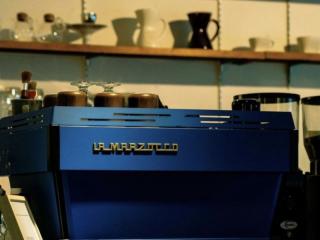
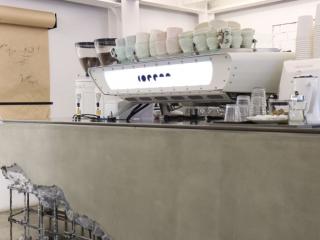
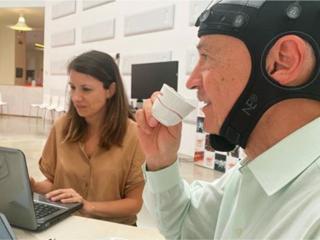









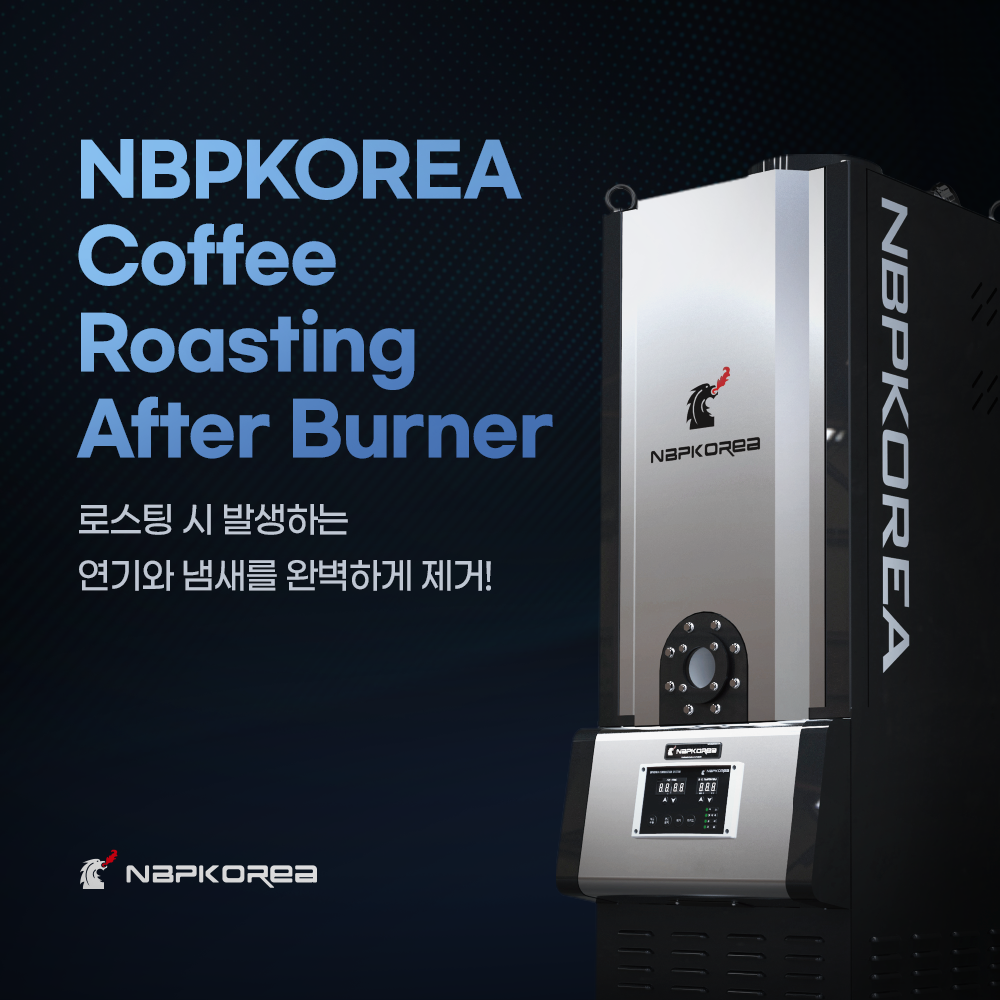
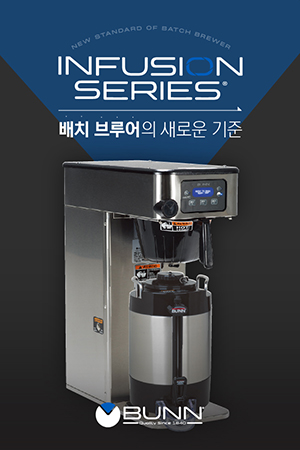
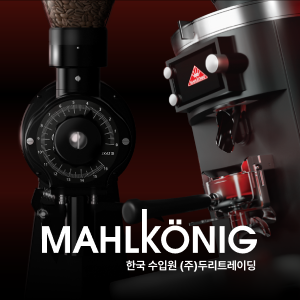

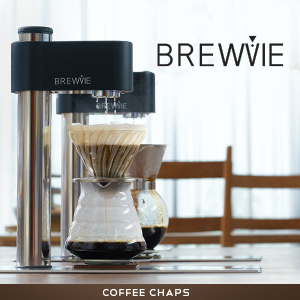

소중한 첫 댓글에! 10 포인트 +